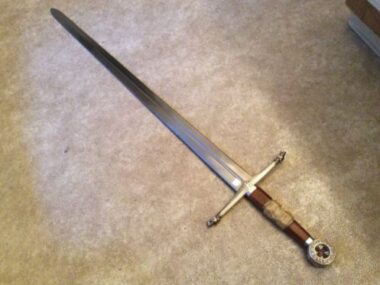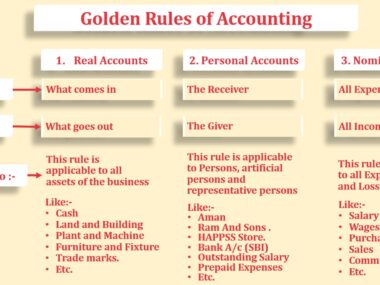23. October 2020
- Steve Feinaru
Shut up.
 ESPN Senior Writer
ESPN Senior Writer
-
- Winner of the Pulitzer Prize 2008 for international reporting.
- Four times winner of the Associated Press Sport Editorial Contest
- Co-author of The New York Times bestseller, The Denial League.
- Mark Feinaru Wada
Shut up.
 ESPN Staff Writer
ESPN Staff Writer
-
- Investigative journalist at ESPN’s Business and Investigation Department since 2007.
- Co-author of the New York Times Bounce League and Shadow Game bestsellers.
- Co-winner, 2004. The George Polk Award
A well-known insurance broker, whose clients are the NFL and the top baseball league, insures the university sports departments when their athletes are hospitalized with KOVID-19.
The insurance potentially covers about 450,000 athletes at more than 1,200 NCAA schools, but it is not known how many will buy the policy. Some conferences have cancelled the fall sports, while others are already well into the football season.
The policy has been postponed for months because of the backstage drama. Alex Fairley, the broker who arranged the deal, said an insurance company withdrew the day before the university football season, citing a reputation risk. It is fair to say that the company, a subsidiary of Berkshire Hathaway, is concerned about political offences related to playing sports during the pandemic, but the insurer said this week that compliance relates to the agreement, not politics.
I was stunned, said Fairly, CEO of the Fairly Group in Amarillo, Texas. It was the first time in 25 years that a program that had been negotiated and linked was recorded 12 hours before the broadcast.
1 Related
I finally found another insurance company in Berkeley, Accident and Health. The company is part of the commercial insurance giant W.R. Berkley Corp. and another subsidiary, Berkley Entertainment & Sports, provides employee compensation insurance for NFL employees.
Susan M. Clarke, president of the Special Accident and Health Risks Department at Berkeley, told ESPN: I think we all learned a lot about ourselves during the pandemic, and one of those things is the importance of the sport. If we could help the universities reduce the risks so that they have a say in how to get students to play safely in sport again, we would be in full swing.
The sports directors and conference committee members interviewed by ESPN showed interest in the story, which, according to many, is impossible to realise because of the potential risks. This policy is only available to schools that are members of the NCAA, which means that NAIA schools and sports programs are excluded. Schools can register until the age of 20. Recording in November.
We’re currently reviewing and evaluating this policy, said Baylor, Director of Athletics at Mac Roads. But our goal is of course to provide all our student athletes over 500 years of age with the highest level of service and appropriate coverage. He rightly assumed that the policy would be purchased primarily by Section II and Section III schools because they were less able to bear the potential costs associated with an athlete becoming seriously ill from the virus.
Reed Amos, commissioner of the Mountain East Conference, a cluster of 12 Division II schools, predicted that if insurance costs were affordable, many schools would consider it. The IEC has suspended all sports, including football, and hopes to resume them next year with a reduced schedule.
It’s fair to say that schools will have two insurance options. For $65 per athlete, they can buy up to $150,000 in individual medical expenses related to COVID-19. For $85 per athlete, the insurance is increased to $250,000. The policy provides for a deduction of $5,000. It includes a death benefit of $10,000.
For the schools of Division I, which support on average about 500 athletes in different sports, the total cost of the KOVID-19 insurance will be at least $32,500.
COWID-19 is reported in the context of the continuing problems related to sports events at the height of the pandemic. Although all major leagues in I. College football programs are currently playing or will play soon, more than 30 games have been cancelled or postponed due to a virus. Two SEC games were recently cancelled after the eruptions of Vanderbilt and Florida.
He had hoped to get into politics for the university football season, but, he says, Hathaway’s Berkshire office suddenly withdrew after several weeks of negotiations. The deal failed when President Trump publicly called for the return of the sport; in the end, the president took responsibility for the Big Ten to reverse their decision to postpone the season. Meanwhile, former vice president Joe Biden placed an ad in which he accused the president of reacting to empty stadiums at football matches with a pandemic.
Berkshire is owned by legendary investor Warren Buffett, who criticised Trump and supported the Democrats in the last presidential election. It’s fair to say that after the last minute decision, I wondered if the deal between President Trump and Vice President Biden for school football had finally killed me – the same thing I was trying to help.
Drew DiGiorgio, President and CEO of a subsidiary of Wellfleet Insurance, said the policy had nothing to do with the fact that the deal was not closed. He challenged Fairly’s characterization that Berkshire Hathaway had changed the plan at the last minute and that the company was concerned about its reputation. Mr DiGeorgio stated that compliance problems were the main obstacle.
I never put the offer up for sale, DiGeorgio said. I was pushed to make a decision, and the decision wasn’t. We got to the 1-meter line, but I never gave my final approval.
He rightly said he had developed the directive as a solution for schools that have to pay exorbitant medical costs when their athletes are hospitalized because of the virus.
We focus primarily on our customers, and whether or not someone agrees with them, our customers want to play sports, to be honest. We wanted to offer them a solution.
But politics is also based on a cold calculation: Insurers have concluded that they can benefit from the pandemic by accepting more money in the form of premiums than they ultimately pay in the form of insurance premiums for sick university athletes.
Dr Prieti Malani, University of Michigan’s chief physician and professor of infectious diseases, said KOVID-19’s insurance offer for university athletes doesn’t seem fair to me. What kind of message are you sending? If you get sick or die, do they think you’re worth that much?
Malani said that in his opinion the insurance was similar to the insurance that people used to buy before they got on a plane because they thought the plane might crash. If you need this kind of insurance, it’s like saying that the coverage you have might not be enough.
Most schools – from Division I to the colleges – closed their doors in the fall, hitting hundreds of thousands of athletes across the country. It’s fair to say that some schools that don’t play in the fall can still take out insurance for athletes who are still training.
Colleges and universities rely on a combination of their own insurance and primary insurance for athletes in case of sports injuries, often through their families. However, many athletes are not insured and the existing sports insurances do not cover KOVID-19.
Medical liability became an urgent issue for many schools in August after the NCAA Board of Governors released a set of requirements for NCAA member schools that want to play during the pandemic. The NCAA has required schools to cover the medical expenses of athletes associated with KOVID-19 in order to avoid out-of-pocket expenses for varsity athletes and their families.
This mandate is particularly problematic for small schools whose budgets would be overstretched by athletes during a stay in hospital, resulting in enormous costs. It was like dropping an atomic bomb on a lot of schools hoping to play, said Michael McBrum, athletic director of West Texas A&M University, a Division II school with about 10,000 students in Canyon, Texas. In fact, what you had was a barricade for most small schools.
The demand has disappointed many athletic directors at small schools, McBrum and others said. The following week, the NCAA issued a statement explaining that the departments must develop rules stipulating that the affiliated schools must pay the costs of health care in connection with VIDOC-19. But this requirement still created a great risk for schools hoping to play.
The NCAA responded to a request for comments by sending ESPN to the Board for clarification.
It’s fair to say that the first answer was when he started studying the KOVID-19 insurance: Are you out of your mind? We have a pandemic. We do not offer insurance.
He stated that he then carried out an actuarial analysis to determine whether the coverage could be made cost-effective. He noted that hospitalization rates for students are significantly lower than those for confirmed elderly people. According to the Centers for Disease Control and Prevention, the number of hospitalizations for people aged 18 to 29 in the world was 10. October with 83.1 per 100,000 cases. In the age group 50 to 64 years this was 280.7 per 100,000 cases.
My counterargument was: It’s the healthiest group of people that can get it, he rightly said.
He calculated that even if the team or the school is hit by a major epidemic, the cost to insurers will remain low because few or no athletes are hospitalized.
It’s one of those scenarios where you see a fire start towards your house. How do you get fire insurance? said Dixon Gillis, CEO of A-G Administrators, a sports accident insurance company that works with about 450 sports departments in the university. If you see a tsunami arriving at your holiday destination, how can you take out flood insurance? Only Alex has developed a plan to cover an infectious disease in the middle of a pandemic.
ESPN investigator John Mastroberardino contributed to this report.
Related Tags:






